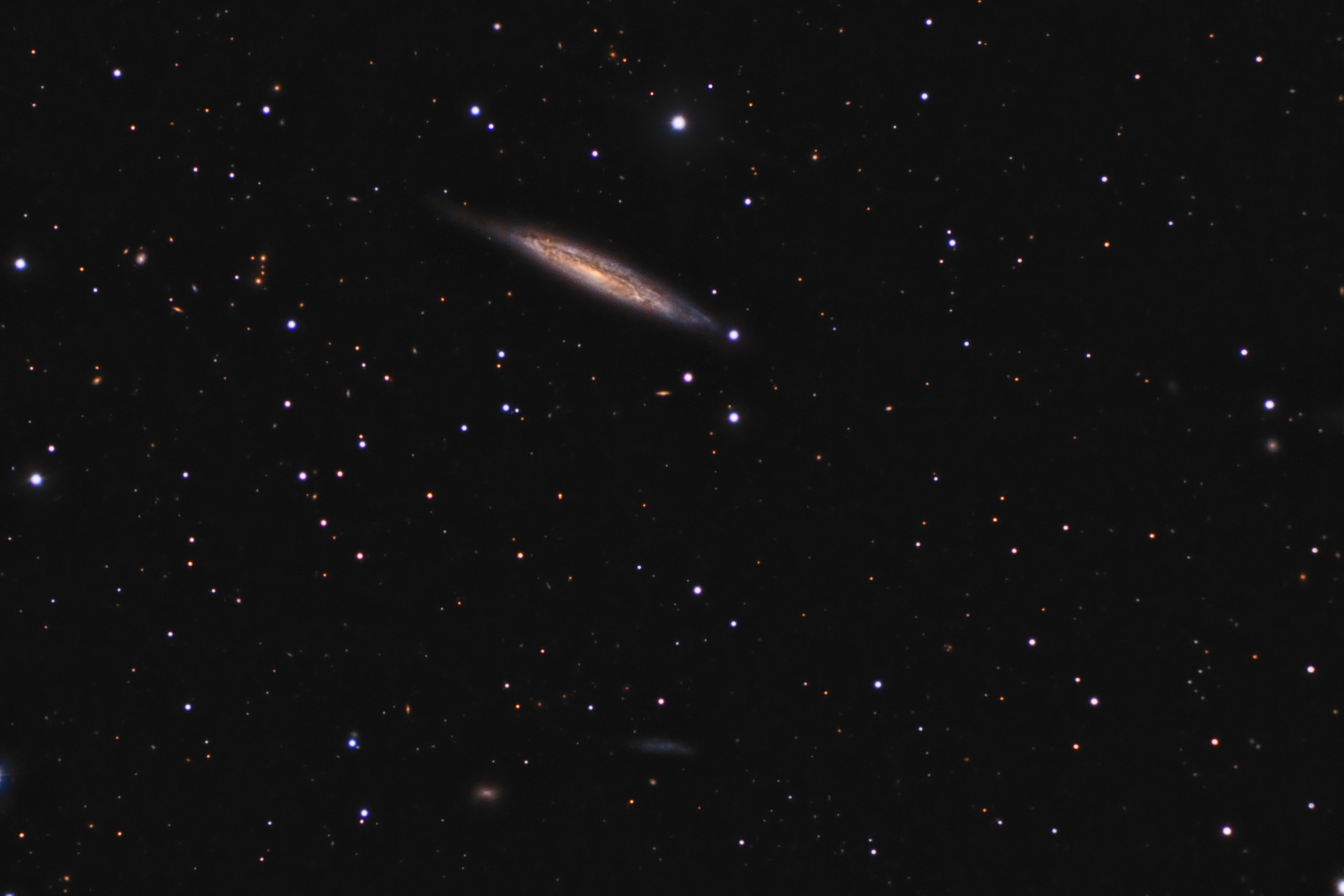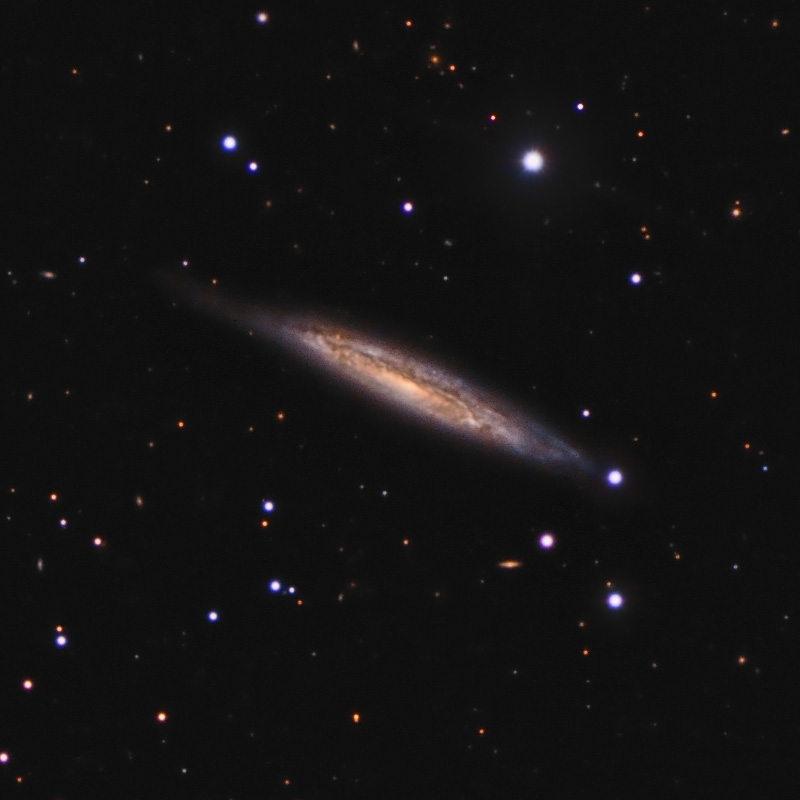| Description | Images |
Object name: NGC4157Designation(s): NGC4157, NGC 4157 is a very large, near edge-on spiral galaxy in eastern Ursa Major on the border with Canes Venatici. In fact, the very faint eastern extension of the galaxy lies in Canes Venatici. NED and most others classify it as SAB(s)b?. It was discovered by William Herschel on March 9, 1788 and is in the second H400 program showing not all the "good ones" are in the first 400. They saved some for the second. While my notes from the second are lost my notes from the first, indicate I was wondering why some losers were in the first list when some like this one weren't. I measure it at about 150,000 light-years across making it a huge spiral. It likely would be spectacular seen face on though I suspect it may not have as bright a surface brightness as say M51 or others in this part of the sky. While redshift puts it at 45 million light-years distant other measurements average out to 54 to 55 million light-years. Most sources I saw say it is likely at least this distant. Some say it is a bit further away which makes it even larger than my 150,000 light-year estimate. For such a nice galaxy I was surprised how few amateur images I found of it. I assume the two faint extensions, most easily seen to the upper left, are due to faint, widely extended arms rather than plumes. If so it might be more a SAB(s)c or even SAB(s)d galaxy if seen face-on. Related Designation(s):2MASS J12110436+5029060, 2MASX J12110436+5029048, 2MFGC 09591, 6C B120833.1+504537, 6C B120834.5+504553, 87GB 120837.8+504642, 87GB[BWE91] 1208+5046, AKARI J1211035+502901, CGCG 1208.6+5047, CGCG 269-038, EON J182.770+50.485, FGC 1380, HDCE 0706 NED046, HIJASS J1211+50, IRAS 12085+5045, IRAS F12085+5045, LDCE 0867 NED086, LGG 258:[G93] 025, MCG +09-20-106, NGC 4157, NGC4157, NSA 140872, PGC 038795, RFGC 2212, SDSS J121104.35+502904.1, UGC 07183, UMa Cluster:[PRL2014] U140, UZC J121103.2+502859, [M98j] 170 NED45, [RHM2006] SFGs 019, [WB92] 1208+5046, |


